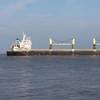Hapag-Lloyd to Accelerate Digitalization as it Doubles 1H 2018 Loss
The the first half year 2018 net loss of Germany's Hapag-Lloyd is more than doubled to UER 100.9 million ($116 million) from EUR 42.7 million (USD 49 million) a year ago.
The shipper attributed this loss to rising fuel costs and the slow recovery in freight rates diluted the synergies from the German ocean carrier’s merger with United Arab Shipping Company.
"The first half of 2018 was shaped by clearly increasing fuel costs, higher charter rates and a slower than expected recovery of freight rates. In response to that, we have implemented additional measures to recover these costs: we are critically reviewing the economic viability of our ship systems and are further optimising our terminal contracts, to gain additional relief on the cost side,” said Rolf Habben Jansen, Chief Executive Officer of Hapag-Lloyd.
Revenues climbed up to EUR 5.4 billion in the first six months of this year (H1 2017: EUR 4.5 billion) and the reported transport volume increased by 39 percent to 5,848 TTEU (H1 2017: 4,221 TTEU). The reported average freight rate decreased to 1,020 USD/TEU in the first half of the year 2018 (H1 2017: 1,065 USD/TEU).
On a pro forma basis and when compared to the combined business of Hapag-Lloyd and UASC in the first half year of 2017, volumes are up 3.9 percent and rates have increased 3.0 percent. Bunker prices increased significantly to USD 385/tonne in the first six months 2018 (H1 2017: USD 312/tonne) and mainly contributed to higher operational costs.
Rolf Habben Jansen added: “For the remainder of the year, we see a slow but steadily improving market environment, but we recognise that there are still significant geopolitical uncertainties that could influence the market. This only reinforces the necessity to be able to react quickly when needed – and we therefore will accelerate some of our digitalisation initiatives and finalise our new strategy until the end of this year.”
The reported figures of the first half year 2018 include United Arab Shipping Company Ltd. (UASC) and can therefore only be compared to a limited extent with the figures of the first half year 2017 (including UASC since 24 May 2017).











